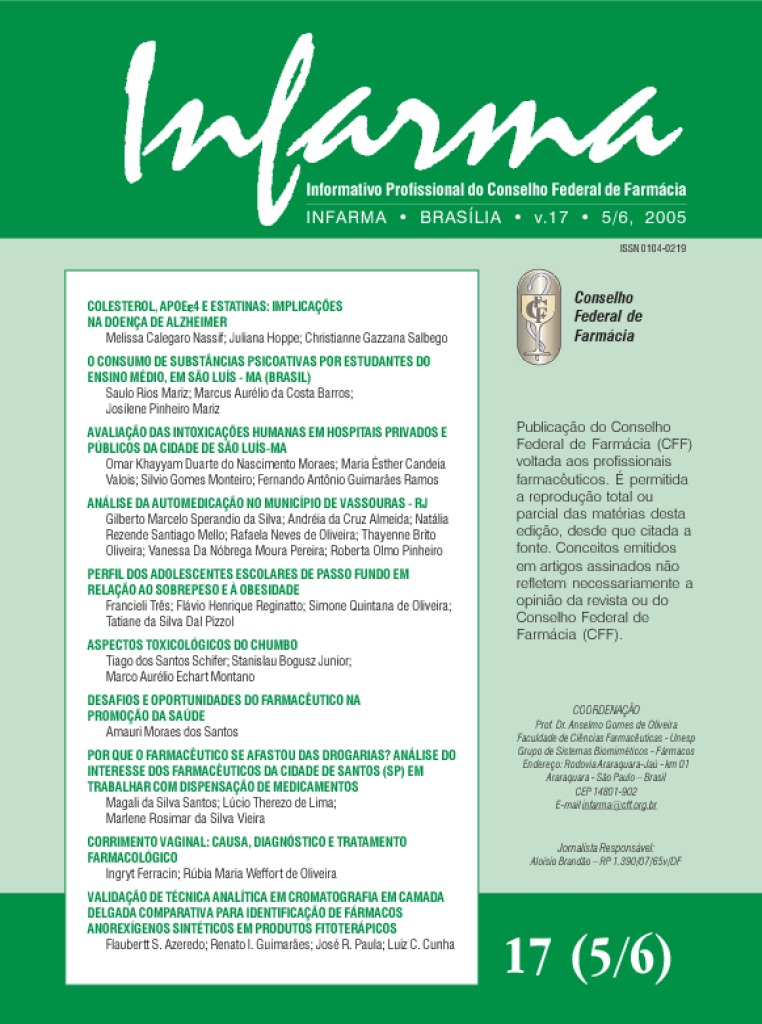COLESTEROL, APOEε4 E ESTATINAS: IMPLICAÇÕES NA DOENÇA DE ALZHEIMER
Abstract
O crescimento da expectativa de vida média da população mundial tem sido acompanhado do aumento na prevalência de doenças neurodegenerativas, características do envelhecimento, como a doença de Parkinson, isquemia cerebral (popularmente chamada de derrame) e, especialmente, a Doença de Alzheimer. A Doença de Alzheimer (DA) atinge, atualmente, cerca de 15 milhões de pessoas acima dos 65 anos de idade, em todo o mundo, podendo triplicar o número de casos, até 2050(FORMAN et al., 2004; PUGLIELLI et al., 2003). A DA é uma desordem neurológica complexa que leva à demência, caracterizada por atrofia cerebral generalizada, declínio progressivo na função mental e na memória, e na deterioração intelectual do paciente. O processo da doença envolve adegeneração de sinapses e a morte de neurônios de regiões cerebrais fundamentais para a aprendizagem, memória e para o controle emocional (MATTSON & CHAN, 2003).Downloads
Published
2013-01-21
How to Cite
Nassif, M. C., Hoppe, J., & Salbego, C. G. (2013). COLESTEROL, APOEε4 E ESTATINAS: IMPLICAÇÕES NA DOENÇA DE ALZHEIMER. Infarma - Pharmaceutical Sciences, 17(5/6), 46–49. Retrieved from https://cff.emnuvens.com.br/infarma/article/view/269
Issue
Section
Original article
License
Authors who publish in this journal agree to the following terms:
- Authors retain the copyright and grant the journal the right of first publication, with the work simultaneously licensed under the Licença Creative Commons Attribution which allows the sharing of work with acknowledgment of authorship and initial publication in this journal.
- Authors are authorized to take additional contracts separately, for non-exclusive distribution of the version of the work published in this journal (e.g. publish in institutional repository or as a book chapter), with acknowledgment of authorship and initial publication in this journal.
- Authors are allowed and encouraged to publish and distribute their work online (e.g. in institutional repositories or on their personal page) at any point before or during the editorial process, as this can generate productive changes as well as increase the impact and Citation of published work (See O Efeito do Acesso Livre ).


